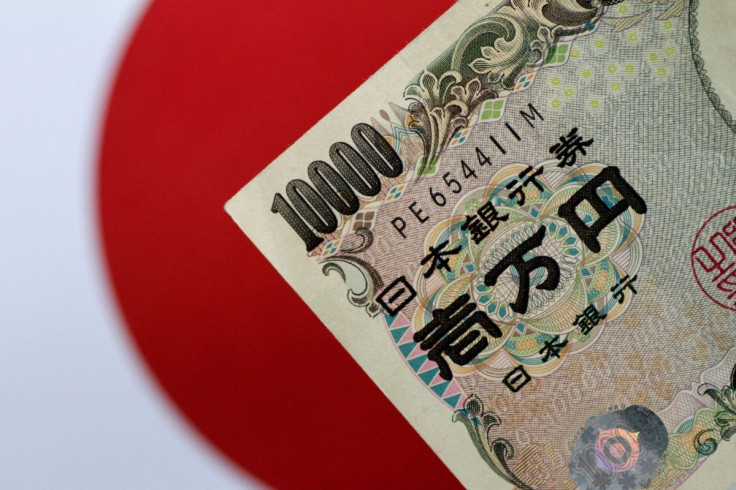Yen At 6-yr Low On Decisive BOJ Move To Tamp Down Bond Yields

The Japanese yen crashed to a six-year low versus the dollar on Monday, and headed for its biggest monthly loss since 2016 after the Bank of Japan moved to contain rising bond yields, even as U.S. Treasury yields soared to new multi-year highs.
The Bank of Japan has pledged to keep policy loose, in contrast with most other major central banks which are in rate hike mode, especially the U.S. Federal Reserve which is widely expected to deliver a half-point interest rate rise in May.
Treasury yields rose further on Monday, with 10-year yields above 2.5% at a three-year high, boosting the dollar's index to a two-week high.
To stop the global yield rises from spilling into Japanese bond markets, the BOJ offered to buy an unlimited amount of debt with maturities of more than five years and up to 10 years. It pledged to do this for three consecutive days.
That sent the dollar 1.6% higher against the yen at 124 yen by 0825 GMT, the highest since Aug 2015. Yen losses so far in March surpass 7%.
BOJ IS OUTLIER
The Japanese currency also lost ground against the euro, which is increasingly underpinned by expectations the European Central Bank will join the rate hike club this year. The euro gained 0.8% at 135.6 yen, a four-year high.
"The yen has been hit by a multitude of factors. More importantly, virtually all central banks have been changing course and talking more hawkish but not the BOJ," said Jan von Gerich, chief analyst at Nordea.
"Even in this inflationary environment, the BOJ has not moved with other central banks and that has weighed on the yen."
The dollar rose 0.4% against a basket of currencies, with 130 bps of interest rate rises priced until the July meeting. While money markets now see the ECB kicking off rate rises in July, its monetary tightening will lag the Fed, keeping the euro under pressure against the greenback.
The common currency slid 0.3% to $1.095.
Its fortunes this week could be determined by inflation figures from major European economies, with the bloc's harmonised HICP inflation seen edging up to 6.5% in March.
Commodity currencies continued to enjoy support from elevated oil and metals prices. The Australian dollar inched higher to $0.7527 to hold near last week's four-month high, helped also by rising bond yields -- three-year yields were at the highest since 2014.
One possible headwind for the Aussie is the COVID-19 situation in China, after Shanghai said on Sunday it would lock down the city to carry out COVID-19 testing.
The dollar climbed to a two-week high of 6.3983 on the offshore yuan <CNH=EBS>, before paring gains.
In cryptocurrency markets, bitcoin traded around $46,944 after touching $47,766, its highest since early January.
© Copyright Thomson Reuters {{Year}}. All rights reserved.





















